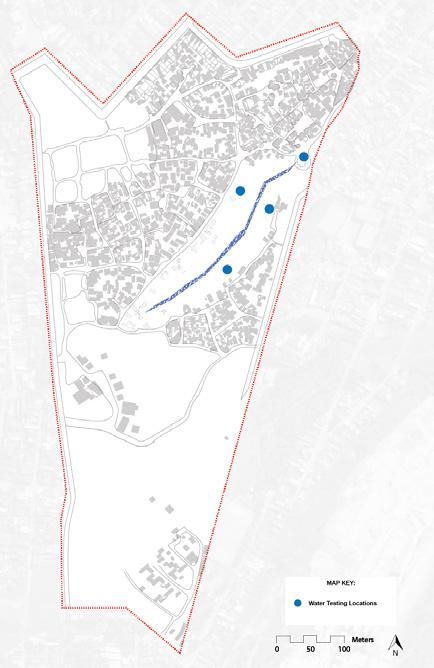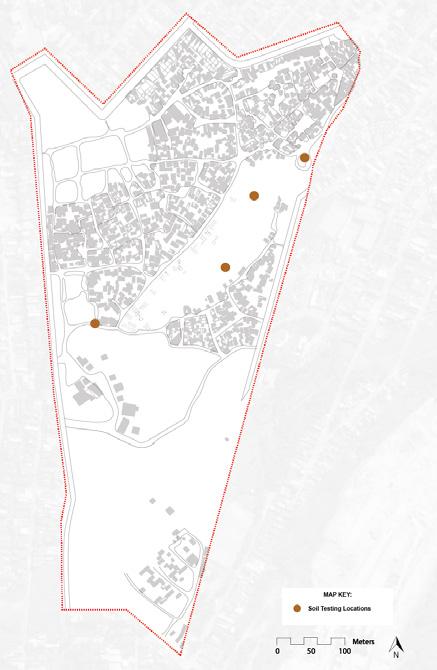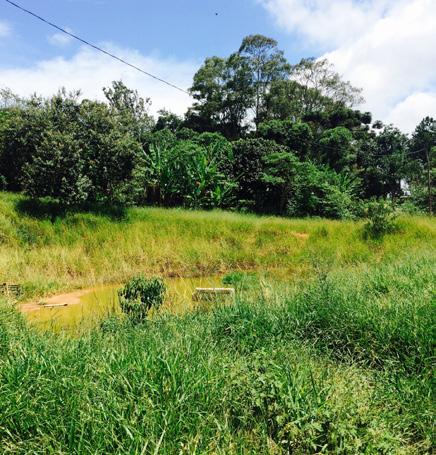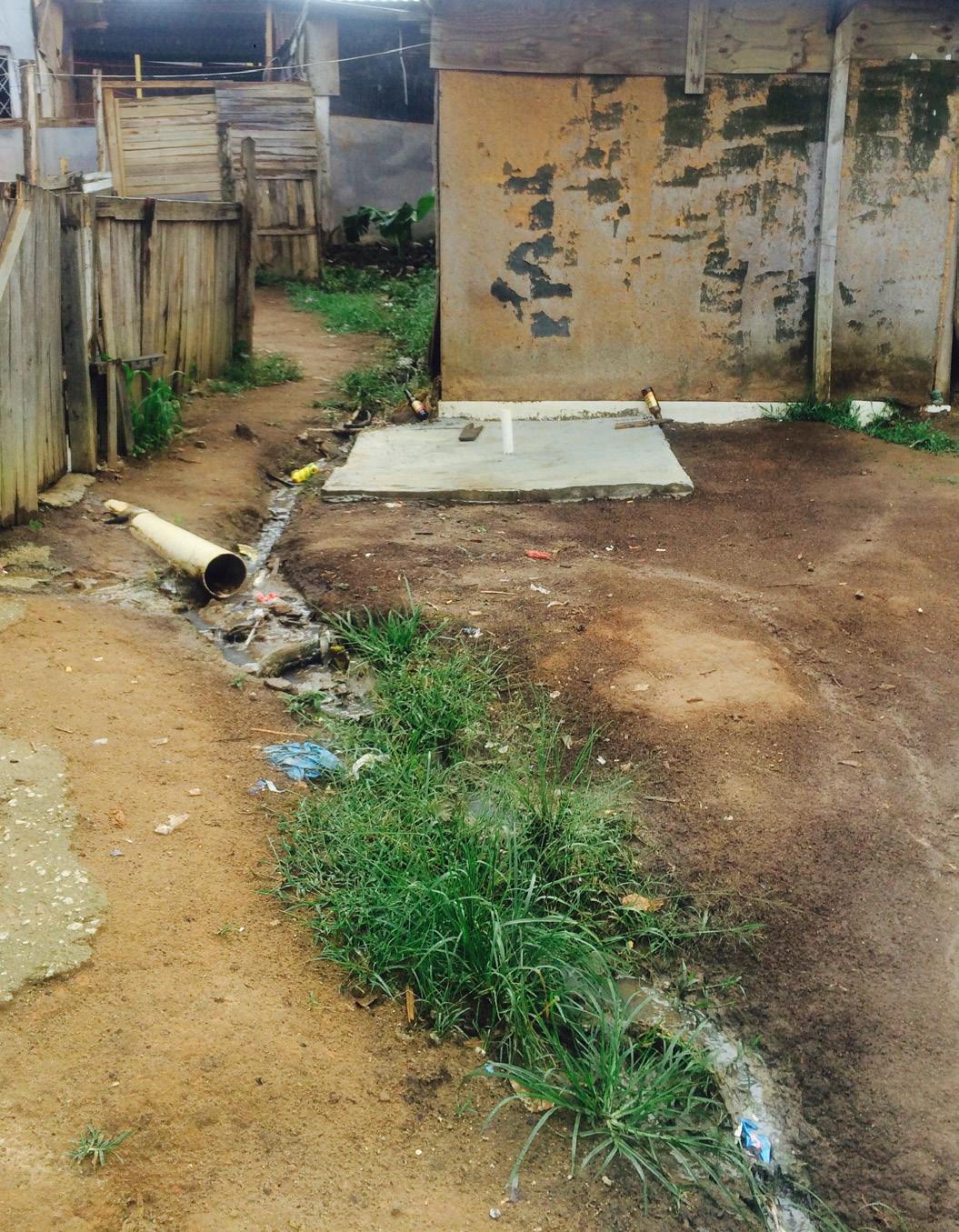
4 minute read
Water Testing Methods
WATER AND SOIL TESTING
The Taubman team took water and soil tests in order to identify major pollution areas. The results of these tests showed heavy pollution in the creeks and the soil of Ocupação Anchieta. As a result, the Taubman team recommends that the cleanup of both elements be part of the remediation plan. Although the settlement is connected to the municipal water system, albeit informally, cleanup of the surrounding environment will also allow for a cleaner and more reliable public utilities.
66 (left) Resident Showing Natural Spring Area.
WATER TESTING METHODS
The Taubman College team used water testing as a methodology for data collection in Ocupação Anchieta. These tests better inform the team about the site conditions and confirm the team’s assumptions about environmental quality. Water testing included three stages: water quality testing, flow testing, and evaluation of water accessibility through quantitative and qualitative processes. While water testing was generally successful, the qualitative information obtained through this testing provided the most information for the planning and design processes.
The first step in water quality and flow testing was site selection within Ocupação Anchieta. Initially, the team planned to select two sites in the creek: one as close to the source water as possible, and the other at the periphery of the settlement where the creek enters a closed drain. The team planned to conduct one set of tests before a heavy rainstorm, and one afterwards.
Upon arrival, we encountered problems that led us to adapt our original plans. The first problem was that the exact spring locations were unknown. The Taubman Team found one of the locations where spring water starts, but we were not able to collect water directly from this source. Beyond this, students were told different information regarding the number and general locations of all the springs. We suspected there were springs deep upstream in the creek, but the vegetation became too dense to investigate. We were also told there was a spring water source on the south side of the site, but we were unable to find it.
Therefore, the team modified the original water testing plan to collect water at four locations of interest: (1) midway through the creek at a crossing area where a small urban farm is located, (2) as
67 Water Testing.
far deep into the creek we could access, (3) a gully where water was stagnant near the edge of the Occupation, and (4) right before the creek water flows into a pipe and out of the Occupation. We used empty plastic water bottles to collect water onsite and conducted the rest of the water testing in the hotel later. We used iPhone geolocation to maintain the specific coordinates of these sites.
Water quality testing began with qualitative assessments of turbidity and odor. To evaluate turbidity, we visually evaluated the color and opacity of the collected water. To evaluate odor, we smelled the top of the bottle and recorded the scent. We then used the First Alert Drinking Water Testing System to test for bacteria, lead, pesticides, nitrates, nitrites, pH, hardness, and chlorine. Everything necessary to complete the testing was available in the kits, which our team purchased off Amazon.com. Moreover, detailed instructions were included with the kit.
Overall, the results of the water tests were informative but not surprising. Most of the water had no distinctive color, but had obvious

68 Soil Testing.
particles in it, as opposed to being completely clear. Moreover, only the stagnant water at site 3 had a noticeable smell. Every site tested positive for bacteria, which means “it is highly likely that potentially harmful bacteria were detected” (BRK Brands, Inc., 2005). Given the amount of sewage, runoff, stagnant water, and trash present, this result was expected. We recommend further specific testing to understand how to properly treat the water or improve water quality.
Each site tested negative for lead (concentration was below 15 ppb) and two different pesticides, atrazine and simazine (concentration below 3 ppb and 4 ppb, accordingly) (BRK Brands, Inc., 2005). Because of the nature of the testing, there could be lead and pesticides present in the water, but not above the Environmental Protection Agency (EPA) action levels. We recommend further testing to understand the extent of these particles and nature of the problem. The nitrate and nitrite levels are variable, but not extremely high. This, therefore, does not provide much implication of the source or severity of pollution of the site. No chlorine was found to be present, and the total hardness and pH both increased as the samples moved downstream. While these amounts were not high, they may imply abnormal mineral amounts in the water. We also recommend further testing regarding these.
For flow testing, we used methodologies informed by Trimmer (1994). We intended to use the average cross section method, but revised our strategy when we reached the site (Trimmer, 1994). Instead, the Taubman Team considered using the discharge from a pipe method, but then decided this type of testing was not worthwhile as the flow was too variable

69 Water Spring Site.
70 Water Site Near Instituto Anchieta Grajaú.








